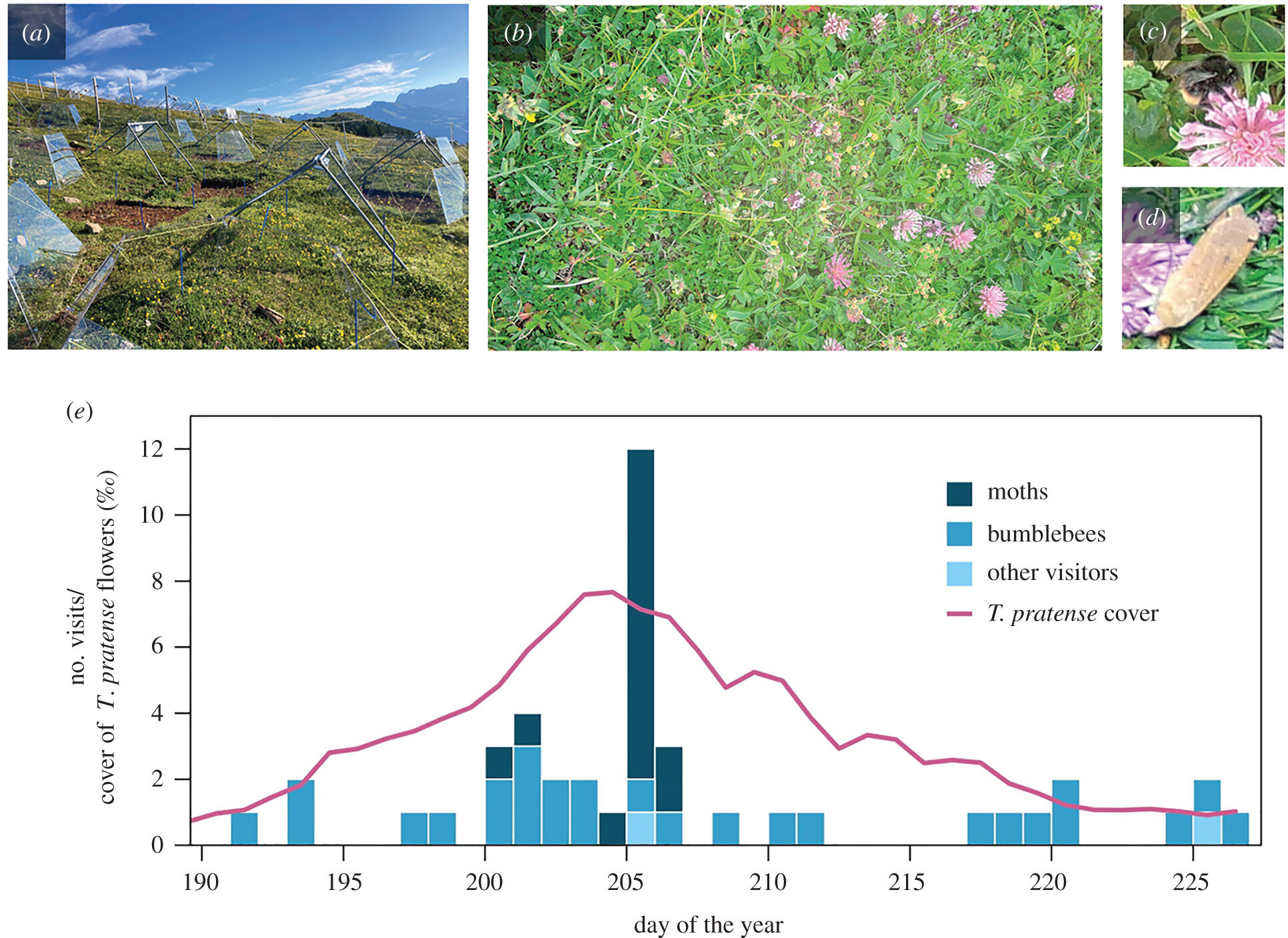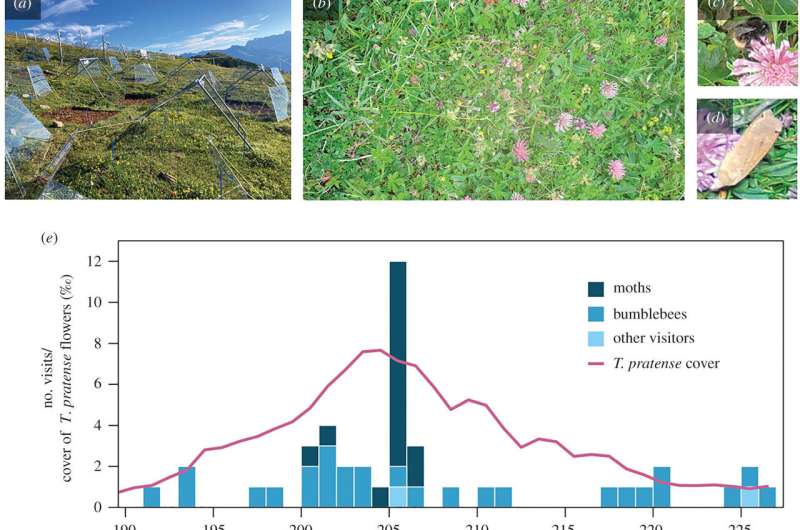

A team of researchers from Aarhus University and the Institute for Integrative Biology, ETH Zürich, has found that moths are major clover pollinators. In their paper published in the journal Biology Letters, the group describes how they studied imagery from time-lapse cameras they set up in the Swiss Alps and what they learned by studying images captured by the cameras at night.
Clover is an important crop because it is used extensively in livestock feed, which is why makers of such products have become concerned about worldwide reductions in bee populations—researchers have assumed for many years that bees are the primary, if not only, pollinators of the plants. In this new effort, the researchers have found evidence of another clover pollinator—yellow underwing moths.
The researchers were studying adaptations by plants and their pollinators to global warming—some anecdotal evidence had suggested some plants tend to move uphill, when possible, to find more favorable conditions. To find out if that might be the case, they set up 15 time-lapse cameras in clover fields in several areas in the Swiss Alps and let them run for three months over the summer of 2021. The cameras were set to record around the clock which, of course, included nighttime hours.
In studying images captured by the cameras, the researchers noticed that moths were pollinating the plants at night—a finding that was wholly unexpected. Intrigued by the finding, the researchers began counting how often the clover plants were being visited by the moths along with visits by bees and other insects. They found that as expected, bees accounted for the largest number of visits—61%. But moths, which were not known to pollinate clover at all, accounted for 34% of visits. The other 5% of visits were made up of various butterflies and wasps.
Moths are known to pollinate other plants but their work in pollinating clover seems to have been missed by others studying the plants, the researchers note. They suggest that future research efforts focused on the pollination of other crops needs to involve taking a closer look at what happens at night.
Field study shows pollinators prefer saltier nectar
Jamie Alison et al, Moths complement bumblebee pollination of red clover: a case for day-and-night insect surveillance, Biology Letters (2022). DOI: 10.1098/rsbl.2022.0187
© 2022 Science X Network
Citation:
Moths are major pollinators for clover (2022, July 27)
retrieved 27 July 2022
from https://phys.org/news/2022-07-moths-major-pollinators-clover.html
This document is subject to copyright. Apart from any fair dealing for the purpose of private study or research, no
part may be reproduced without the written permission. The content is provided for information purposes only.